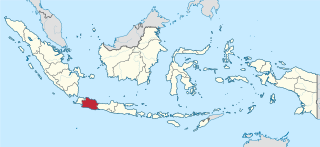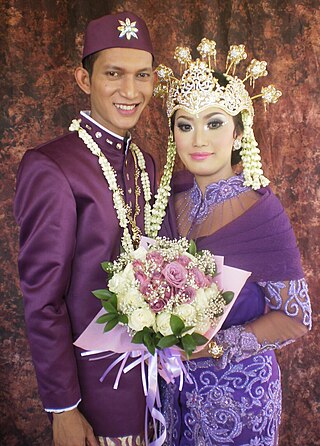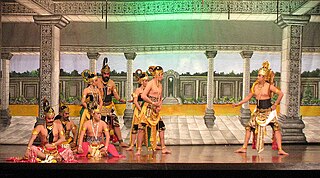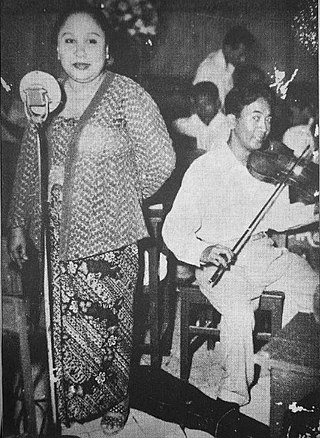
Gamelan is the traditional ensemble music of the Javanese, Sundanese, and Balinese peoples of Indonesia, made up predominantly of percussive instruments. The most common instruments used are metallophones and a set of hand-drums called kendang, which keep the beat. The kemanak, a banana-shaped idiophone, and the gangsa, another metallophone, are also commonly used gamelan instruments on Bali. Other notable instruments include xylophones, bamboo flutes, a bowed string instrument called a rebab, and a zither-like instrument called a siter, used in Javanese gamelan. Additionally, vocalists may be featured, being referred to as sindhen for females or gerong for males.

As it is a country with many different tribes and ethnic groups, the music of Indonesia itself is also very diverse, coming in hundreds of different forms and styles. Every region has its own culture and art, and as a result traditional music from area to area also uniquely differs from one another. For example, each traditional music are often accompanied by their very own dance and theatre. Contemporary music scene have also been heavily shaped by various foreign influences, such as America, Britain, Japan, Korea, and India.

West Java is an Indonesian province on the western part of the island of Java, with its provincial capital in Bandung. West Java is bordered by the province of Banten and the country's capital region of Jakarta to the west, the Java Sea to the north, the province of Central Java to the east and the Indian Ocean to the south. With Banten, this province is the native homeland of the Sundanese people, the second-largest ethnic group in Indonesia.

Wayang, also known as wajang, is a traditional form of puppet theatre play originating from the Indonesian island of Java. Wayang refers to the entire dramatic show. Sometimes the leather puppet itself is referred to as wayang. Performances of wayang puppet theatre are accompanied by a gamelan orchestra in Java, and by gender wayang in Bali. The dramatic stories depict mythologies, such as episodes from the Hindu epics the Ramayana and the Mahabharata, as well as local adaptations of cultural legends. Traditionally, a wayang is played out in a ritualized midnight-to-dawn show by a dalang, an artist and spiritual leader; people watch the show from both sides of the screen.

The culture of Indonesia has been shaped by long interaction between original indigenous customs and multiple foreign influences. Indonesia is centrally-located along ancient trading routes between the Far East, South Asia and the Middle East, resulting in many cultural practices being strongly influenced by a multitude of religions, including Buddhism, Christianity, Confucianism, Hinduism, and Islam, all strong in the major trading cities. The result is a complex cultural mixture, often different from the original indigenous cultures.

The Sundanese are an indigenous ethnic group native to the western region of Java island in Indonesia, primarily West Java. They number approximately 42 million and form Indonesia's second most populous ethnic group. They speak the Sundanese language, which is part of the Austronesian languages.

Bangsawan is a type of traditional Malay opera or theatre performed by a troupe and accompanied by music and sometimes dances. The bangsawan theatrical performance encompasses music, dance, and drama. It is widely spread in the Malay cultural realm in Malaysia, Indonesia, Singapore, and Brunei. The artform is indigenous in Malay Peninsula, Riau Islands, Sumatra, and coastal Borneo.

Topeng is a dramatic form of Indonesian dance in which one or more mask-wearing ornately costumed performers interpret traditional narratives concerning fabled kings, heroes, and myths, accompanied by gamelan or other traditional music instruments. Topeng dance is a typical Indonesian dance that can be found in various regions of Indonesia. Topeng dance has the main characteristic that the dancers use masks to cover their faces. The dance will usually be performed by one dancer or a group of dancers.

Wayang wong, also known as wayang orang, is a type of classical Javanese and Balinese dance theatrical performance with themes taken from episodes of the Ramayāna or Mahabharāta. Performances are stylised, reflecting Javanese court culture:
Wayang wong dance drama in the central Javanese Kraton of Yogyakarta represents the epitome of Javanese aesthetic unity. It is total theatre involving dance, drama, music, visual arts, language, and literature. A highly cultured sense of formality permeates every aspect of its presentation.

Nyi Roro Kidul is a supernatural being in Indonesian folklore. She is the Queen of the Southern Sea in Sundanese and Javanese mythology.

Wayang golek is one of the traditional Sundanese puppet arts from West Java, Indonesia. In contrast to the wayang art in other areas of Java island that use leather in the production of wayang, wayang golek is a wayang art made of wood. Wayang golek is very popular in West Java, especially in the Pasundan land area. Today, wayang golek has become an important part of Sundanese culture.

Lutung Kasarung is a Sundanese folktale from Indonesia. Set in the Pasir Batang Kingdom, it tells the tale of a magical lutung who helped a beautiful princess, Purbasari Ayuwangi, when her older sister attempted to rob her of her status as crown princess. The story is from an old Sundanese quatrain.

Ketoprak is a theatrical genre of Java featuring actors who may also sing to the accompaniment of the gamelan. It draws its stories from Javanese history and romances and in this differs from wayang wong, which shares with wayang kulit a repertoire drawn from the Hindu epics Mahabharata and Ramayana, as well as from ludruk which uses contemporary settings and the three-walled srimulat, which specializes in vampire stories. According to Clifford Geertz it was invented as recently as 1923.

Ludruk is one of the theatrical genres in East Java. It is a form of traditional performance presented by a troupe of actors on a stage, re-telling the life stories of everyday people and their struggles. Its origin is unclear, but it is believed to be dated as far back as the 13th century.

The Battle of Bubat also known as Pasunda Bubat is the battle between the Sundanese royal family and the Majapahit army that took place in Bubat Square on the northern part of Trowulan in 1279 Saka or 1357 CE.

Sundanese dances is a dance tradition that is a part of ritual, artistic expression as well as entertainment and social conduct among the Sundanese people of West Java and Banten, Indonesia. Sundanese dance is usually cheerful, dynamic and expressive, with flowing movements in-sync with the beat of kendang accompanied with Gamelan degung music ensemble.

It is quite difficult to define Indonesian art, since the country is immensely diverse. The sprawling archipelago nation consists of 17.000 islands. Around 922 of those permanently inhabited, by over 1,300 ethnic groups, which speak more than 700 living languages.

Indonesian theatre is a type of art in the form of drama performances that are staged on a stage, with a distinct Indonesian nuance or background. In general, theatre is an art that emphasizes the performing arts that are displayed in front of a large crowd. In other words, theater is a form of visualisation of a drama that is staged on the stage and watched by the audience. Indonesian theatre includes the performing arts of traditional theater and modern theatre located in the territory of Indonesia. Some examples of Indonesian theater are Arja, Wayang, Wayang wong, Lenong, Ludruk, Janger, Randai and others. Theatre in Indonesia can also be referred to as regional or ethnic theatre, because it originates and develops from 1,300 ethnic cultures in Indonesia.

Raden Ajeng Srimulat, also known simply as Srimulat, was an Indonesian comedian, actor, singer, and founding member of the popular Srimulat comedy troupe. She was the wife of Teguh Slamet Rahardjo, one of the most famous Indonesian comedians of the postwar era.


























